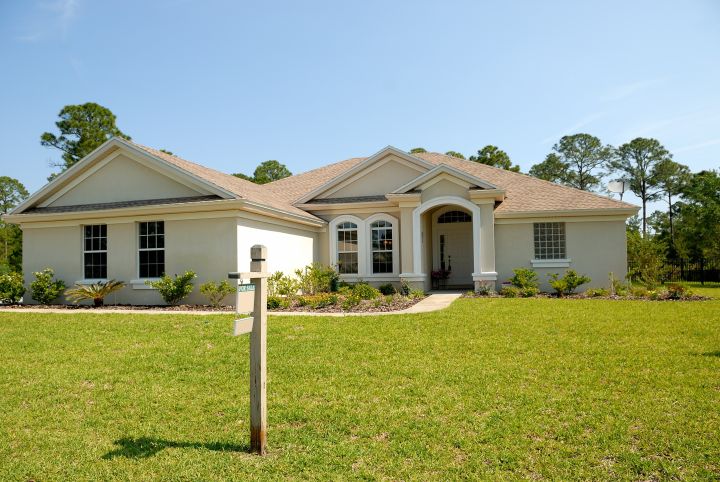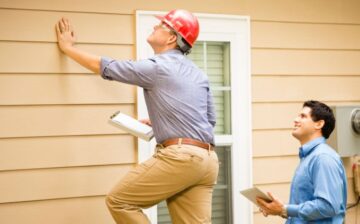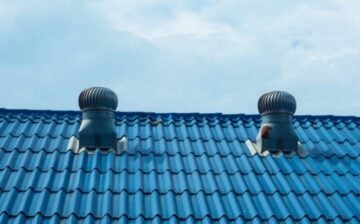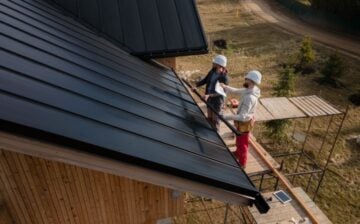Roof replacement is one of your options before selling a house, but is it worth doing? Put simply, it depends on how much it will affect your sale price. Here’s what you should know about this.
What Impact Does a Bad Roof Have on a Sale?
A roof is a major component of a house, so problems with a roof can significantly affect your sale process. There are three impacts a damaged roof can have on a sale.
First, you may receive fewer offers. Roof replacements discourage buyers who want to move in immediately, so you can expect fewer offers on your house. If you’re in a heavily-in-demand area, you can tolerate this, but regions with fewer buyers may see their offers drop to zero.
Second, bad roofs tend to cause slower sales. In many cases, buyers want to negotiate over it. Alternatively, they may insist on repairs or replacement as part of the sale, which could take weeks to resolve.
Finally, without a replacement for a bad roof, you can expect a much lower selling price. It’s not unusual for a sale price to drop by $20,000 or more if buyers need to replace the roof.
Hot markets tend to cover problems like these. If you have ten buyers trying to one-up each other, it’s acceptable if a few more turn away. They probably didn’t want to pay as much anyway. In a buyer’s market, replacing a roof is often better.
What Are Roof Replacement Options?
You don’t necessarily have to replace your entire roof when you’re trying to sell a house. There are several roof repair options you can consider instead.
First, shingle replacement focuses on fixing individual damaged elements. Replacement is a good idea in areas with a lot of wind and tree damage.
Second, you may be able to do a partial re-roofing. If you only have problems in one area and the rest of the roof is fine, replacing a single section can reduce costs and alleviate buyer concerns. It may even increase your sale price, making it an excellent way to earn a little extra cash off the sale.
If neither replacement nor partial re-roofing work, a replacement is usually the best option.
What Is The ROI On A New Roof?
There are several ways to calculate the value of a roof’s ROI, but the crucial part for most people is that roof replacements usually increase the value of a home by 7%. The higher a home’s value, the more potential you have for earnings.
Beyond straight home value, a new roof can also insulate the home more effectively and reduce heating bills throughout the year. If you do this while improving the home’s overall energy efficiency, that can also increase the value.
Finally, preventing leaks can save you from unwanted expenses. This further improves the value of the roof. After all, repairing water damage before you sell is far more expensive than replacing a roof a little early.
What Are The Signs That A Roof Needs Repair Or Replacement?
The simplest answer is that if a roof looks damaged, it needs a fix. However, there are several specific things you can look for.
First, any buckling or cracked shingles are old and unlikely to work correctly. Areas with more exposure to the weather tend to show their wear first, so they can be an early warning for the rest of your roof.
Second, any sags in the roof are a warning sign. These tend to indicate structural issues like wood rot, and you should plan to fix such damage. If it goes on for too long, it could collapse on top of you.
Third, bits of shingles in your gutters indicate that the primary part of the shingle is dissolving. That’s another warning sign that they need a full replacement.
Ice dams in cold weather are more of a seasonal issue, but they can show troublesome spots.
What Are the Most Affordable Roof Replacement Options?
Asphalt shingles are the cheapest options in most areas. Most of these last at least 25 years, assuming no storm damage, while some high-quality options can last as many as 50 years. Between the durability, low price, and easy access, asphalt is the preferred option for many homeowners. A common cost is about $1 per square foot.
3-tab asphalt shingles have been standard for a long time, but companies are phasing these out in favor of the better-designed architectural asphalt shingles.
Rolled roofing is technically possible for slanted roofs, often running less than half the cost of asphalt shingles. However, rolled roofing has an extraordinarily short lifespan, so it’s not a good long-term solution. If a buyer wants a new roof, but you don’t want to pay for one, you may be able to negotiate for installing this.
Metal roofs are much more expensive than asphalt, usually between $1.50 and $3.50 per square foot. Options like corrugated metal, steel, and aluminum. Although not suitable for all areas, metal roofs are low-maintenance and reliable options.
Copper roofs are expensive, though, and a poor choice for anyone looking to minimize costs.
Concrete tiles are still relatively uncommon, partially because of their high price. They’re also heavier than other materials, so some roofs can’t support them. However, concrete is generally durable and helps reduce heat, making it a good choice for homes in warmer climates.
Wood shingles are usually made with cedar and can cost up to $4.50 per square foot, but they have a decent lifespan and don’t need much maintenance to perform at their best. Cedar insulates quite well, so they’re ideal for homes using central heating or cooling.
What Types Of Roofing Work Best In Each Climate?
Asphalt shingles tend to work well in cold and humid areas. They can draw in heat and help keep homes a little warmer, which is good in areas with long winters and shorter summers. However, you may need to occasionally treat them with an algaecide to help prevent plant growth.
Clay is best in hot and humid areas. They tend to block heat well, which is ideal for homes in areas without central air conditioning. Properly-prepared clay is also resistant to moderate amounts of humidity. However, it tends to freeze and crack in cold weather, so this is a poor choice in areas that can expect a lot of snow and ice.
Concrete works best in hot climates. It absorbs heat slowly, which means it has excellent insulation, and with some care, it can last for an extremely long time. Like slate, however, concrete tends to be heavy and may require reinforcing your roof.
Copper stands out from other metal roofing choices because it has some different qualities. Its distinct appearance helps a home stand out, and a well-installed copper roof may last centuries with minimal maintenance. This is easily among the most durable options, especially because it’s possible to repair individual sections without much trouble.
Metal roofs are suitable for both hot and cold climates. It lets snow slide off better than something with texture while repelling a lot of heat. These are suitable for most areas, although colder homes may want extra insulation near the ceiling.
Rubber works in both hot and cold climates, although preferably not too much to the extremes. It’s particularly effective on flatter roofs where other materials may not work as well.
Slate is among the most durable options, with a possibility of lasting more than 150 years. It’s broadly fire-resistant and shrugs off heat, cold, and moisture like they’re not even there. The sheer toughness makes slate a good choice for practically every environment, but it’s easily one of the most expensive options.
However, slate tiles are very heavy. Most homes will need to reinforce their roof before installing this, which adds to the already comparatively high cost of installing it. A slate roof will often last two to six times longer than other options, though, so it can be surprisingly affordable over time.
Wood is best in cold regions. They provide more insulation than asphalt, while their overall weight helps resist wind. However, they’re not as good in areas with a lot of humidity because that can split the shingles. Wood is for cold and dry, not cold and wet.
Final Thoughts
Roofs are fundamental to homes, so the question of whether you should go for a roof replacement before you sell depends on the environment and what you can expect from potential buyers.
If you have active problems, like leaks, you can expect any buyer to demand that you fix those before the deal closes. Only a truly desperate buyer is likely to ignore that. If the roof is merely old, you may not need to replace it, and the buyer can handle that in a few years.
For more information, talk to your real estate agent or home inspector and ask for their opinion. They can give personalized advice based on the market in your area.
We hope you found this blog post on Should I Replace My Roof Before Selling? useful. Be sure to check out our post on 4 Ways To Keep Your Roof Replacement Project On Budget for more great tips!
Have Experience in the Moving Industry? Want an Additional Income Stream? Work With All Around Moving!
Ever since Covid started, All Around Moving’s Work With Us program, provides experienced moving consultants with the opportunity to run their own Relocation Consultant business, with no need to be in the main office and do so from anywhere in the USA.
A nominal one-time start-up fee of $275.00, gives you the “key” to have your business up and running. There is $125.00 monthly recurring expense, and the cost of purchasing your own type of leads, such local, long distance, you want to work on. We share profits 50-50 with you from all jobs you book with us. Click here to learn more.






